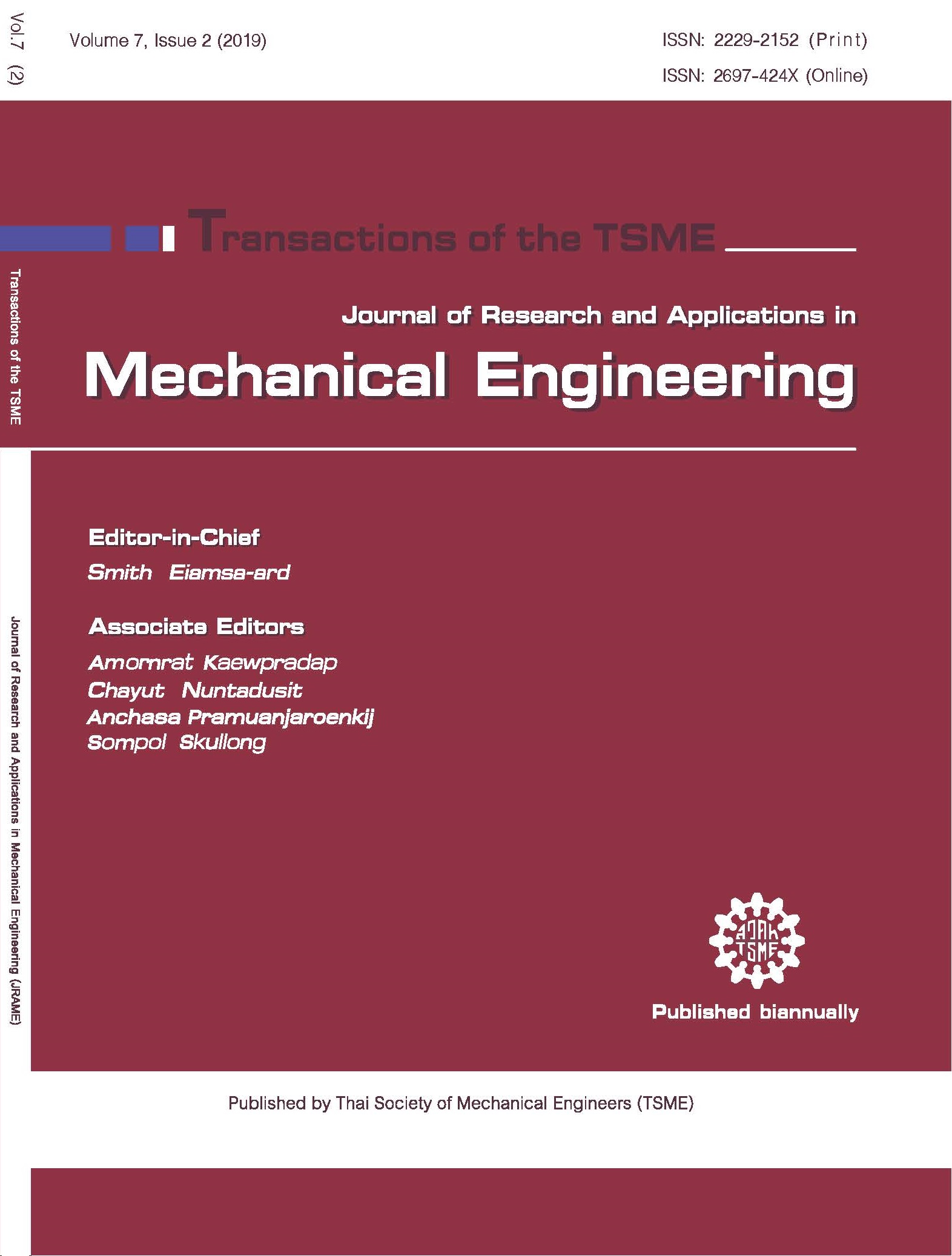The investigation into resistance and flow characteristics around underwater bodies operating near free surface
Main Article Content
Abstract
The coastlines of Thai territories are approximately over 1,500 miles which are required the routine and special patrol operations to protect the national oceanic resources and treasuries. The collaboration of surface, air and underwater operations is the main responsibility for Royal Thai Navy and associated affiliations. Usually, underwater operation requires the submarine with different capabilities. As the main roles of the submarine are different depending on the user requirements and design. The small submarine or Midget Submarine normally has different capabilities and mission envelopes which are normally close to the coastline and shallow water compared with the bigger submarines. Analysis of the submarine hydrodynamic characteristics with the effects of the free surface as the near surface operation is one of the aspects that need to be investigated. Resistance and wave elevation are the main aspects that are more concerned to ensure that the submarine can operate with the desire speed and avoid the wave effects. To demonstrate those characteristics, four different underwater platforms including spherical model, teardrop, torpedo and submarine are investigated. As the advancement of the computer, Computational Fluid Dynamic (CFD) code, STAR CCM+, with the Reynolds-Averaged Navier-Stokes equations (RANS) is used as a tool to assess the underwater platform performance. The resistance coefficients are performed on the speeds of 0.325, 0.651, 1.301, 1.952 and 2.440 m/s which are corresponding to operating speed of 2, 4, 8, 12 and 15 knots respectively for the 30-meter Midget Submarine. Wave elevation is measured to calculate wave resistance to demonstrate the critical speed that generates wave and cause the increase of resistance.
Article Details
This work is licensed under a Creative Commons Attribution-NonCommercial-ShareAlike 4.0 International License.
References
[2] Voxakis, P. Ship hull resistance calculations using CFD methods, 2012, Department of Mechanical Engineering, Massachusetts Institute of Technology, Massachusetts.
[3] Zha, R., Ye, H., Shen, Z. and Wan, D. Numerical computations of resistance of high-speed catamaran in calm water, Journal of Hydrodynamics Ser. B, Vol. 26(6), 2015, pp. 930-938.
[4] Wood, C. Compartment Flooding and Motions of Damaged Ship, PhD Thesis, 2013, University of Southampton, Southampton.
[5] Windén, B., Turnock, S.R. and Hudson, D.A. Validating force calculations using OpenFOAM on a fixed Wigley hull in waves, paper presented in 15th Numerical Towing Tank Symposium, 2012, Cortona, Italy.
[6] Srinakaew, S., Taunton, D.J. and Hudson, D.A. A Study of Resistance of High-Speed Catamarans and Scale Effects on Form Factor, paper presented in proceeding of the 19th Numerical Towing Tank Symposium (NUTTS’16), 2016, St Pierre d’Oleron, France.
[7] Phillips, A.B., Turnock, S.R. and Furlong, M. Influence of turbulence closure models on the vortical flow field around a submarine body undergoing steady drift, Journal of Marine Science and Technology, Vol. 15(3), 2010, pp. 201-217.
[8] Cao, L.S., Zhu, J. and Wan, W.B. (2015). Numerical investigation of submarine hydrodynamics and flow field in steady turn, Journal of China Engineering, Vol. 30, 2015, pp. 57-68.
[9] Marshallsay, P.G. and Eriksson, A.M. Use of Computational fluid dynamics as a tool to assess the hydrodynamic performance of a submarine, paper presented in 18th Australasian Fluid Mechanics Conference, 2012, Launceston, Australia.
[10] Wilcox, D.C. Turbulence Modeling for CFD, 2nd edition, 1998, DCW Industries, Canada.
[11] Sarkar, T., Sayer P.G. and Fraser S.M. A Study of Autonomous Underwater Vehicle Hull Forms Using Computational Fluid Dynamics, International Journal for Numerical Methods in Fluids, Vol. 25, 1997, pp. 1301-1313.
[12] Lam, C.K.G. and Bremhorst, K. A Modified Form of the k-e Model for Predicting Wall Turbulence, ASME Journal of Fluid Engineering, Vo.103, 1981, p. 456.
[13] Baker, C. Estimating Drag Forces on Submarine Hulls, Report DRDC Atlantic CR 2004-125, Defence R&D Canada-Atlantic, 2004.
[14] Crossland, P. Submarine Resistance and Propulsion, UCL Submarine Design Course, November 2018, University College London, London.
[15] Srinakaew, S. A Numerical Study of Resistance Components of High-Speed Catamarans and Scale Effects on Form Factor, PhD Thesis, 2018, University of Southampton, Southampton.
[16] Michell, J.H. The Wave Resistance of a Ship, Philosophical Magazine, Vol. 45, 1898, pp. 106-123.
[17] Doctors, L.J. Modifications to the Michell’s Integral. Improvement predictions of ship resistance, paper presented in proceeding of the Twenty Seventh Israel Conf. on Mech. Eng., 1998, Technion City, Israel.



